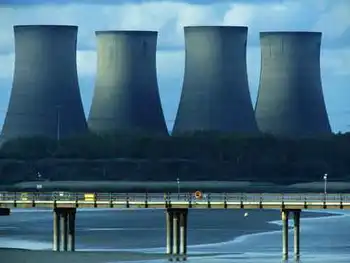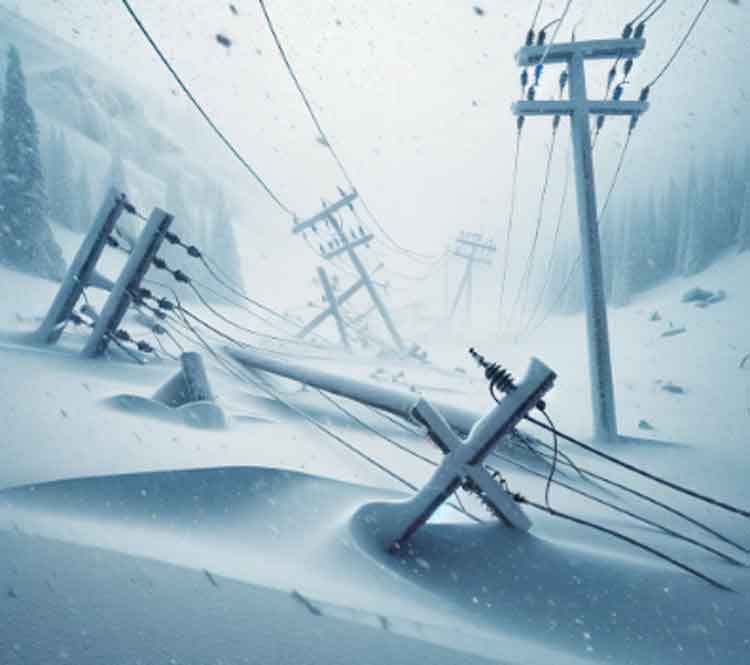Costs keep power lines overhead
By The Tampa Tribune
CSA Z462 Arc Flash Training - Electrical Safety Essentials
Our customized live online or in‑person group training can be delivered to your staff at your location.

- Live Online
- 6 hours Instructor-led
- Group Training Available
The potentially staggering cost to bury the lines, a state law that dictates power companies deliver electricity as cheaply as possible, and lingering doubts about the effectiveness of buried lines means electrical power will be carried overhead on poles for many hurricane seasons to come.
Even if work started immediately, converting to buried lines would take more than a decade.
"It would be 10 or 15 years until everything in the state is underground," said state Rep. Julio Robaina, a Miami Republican and a chief cheerleader for the idea.
Active hurricane seasons the past two years left millions without power, many for weeks, spurring a call to put lines underground to protect them from destructive winds and debris. Supporters said buried lines fared better than overhead lines.
Despite a drumbeat for legislative action, lawmakers are not rushing to take immediate steps.
Changing the state's power grid to an underground system could cost Florida's five investor-owned utilities $136.4 billion, according to a Florida Public Service Commission study last year. In 2002, Tampa Electric Co. estimated it would cost $10 million to convert about 2,500 homes and 200 businesses on Davis Islands to underground lines.
Those costs can be prohibitive and would be passed along to customers.
"You have to weigh the increased cost of electric service every month versus being without power for three weeks after a hurricane," said TECO's Paul Davis, director of energy control.
In addition, underground systems in places that flood, either from a hurricane's rain or storm surge, are highly vulnerable, and repairs cannot begin until the water recedes. Homeowners would have to hire electricians to connect the buried lines to their dwellings, a cost that can range from $500 to $2,000.
Finding and repairing damage to underground systems takes longer and costs more.
"With overhead lines, it's easy to visually identify problems. Underground, you have to dig very carefully," said C.J. Drake, a spokesman for Progress Energy Florida.
In addition, in older neighborhoods there may not be room in the rights of way for electric lines that would need to share space with water and sewer lines. Telephone, cable television and fiber optic cables also would have to be buried.
Supporters of the underground conversion say the benefits are worth the expense and that municipalities can help defray the cost.
Cities could apply for Federal Emergency Management Agency grants, or the state could contribute, Robaina said.
"If you stagger the cost over five or 10 or 15 years, the impact would be minimal," he said.
Robaina, who prepared but has not filed a bill requiring Florida Power & Light to replace utility lines damaged in future hurricanes with underground systems, also said utilities would save the cost of trimming trees around power lines if the cables were buried.
Hearings the Public Service Commission initiated this week should ferret out more concrete information on burying power lines, such as costs and reliability, but it will be months before that information is available.
"The problem is [that] all we have is anecdotal information," said Kevin Bloom, a commission spokesman. "One thing we want to get at is hard data. In Broward County, half the distribution system is underground, but 90 percent lost power."
Laws and rules bar the PSC from quickly ordering utilities to bury power lines.
An administrative code and PSC rule prevent the commission from granting FP&L's offer to kick in 25 percent of a city's cost to convert to underground lines. That arrangement would have had all ratepayers share the cost of another city's conversion, contrary to current PSC rules.
In addition, state law dictates that the commission require utilities to use the lowest cost alternative for supplying electricity.
"The way the statute is now, that would be overhead," Bloom said.
The western Broward County city of Weston, with 80 percent of its power system underground, is an example of mixed results from buried cables. Most of the city of 63,000 users did not lose power during Hurricane Wilma, but some areas with buried lines remained without electricity for a week because aboveground substations were damaged, City Manager John Flint said.
"Underground cabling is no guarantee you won't lose power in a hurricane. It's a false promise," he said.
COSTLY CONVERSION:
Changing overhead electric lines to buried cables would come at a high price.
- Florida Public Service Commission's 2005 study of costs for the state's five investor-owned utilities to convert their electric grid from overhead to underground: $136.4 billion.
- Tampa Electric Co. and Progress Energy Florida estimates to convert overhead lines to underground: $250,000 to $1 million per line mile, under ideal conditions.
- Florida Power & Light's estimate to convert to underground: $50 billion to $70 billion.
- Tampa Electric Co. has 7,000 miles, or 68 percent of its distribution lines, aboveground.
- Progress Energy has 30,000 miles, or 76 percent of its distribution lines, aboveground.
- Estimated cost to a homeowner for changing power connections from overhead to underground: $500 to $2,000.











